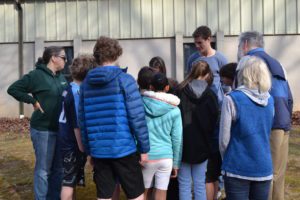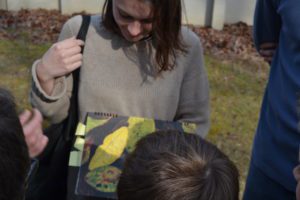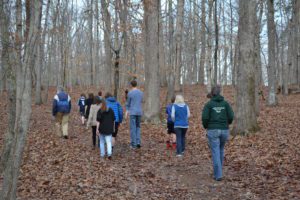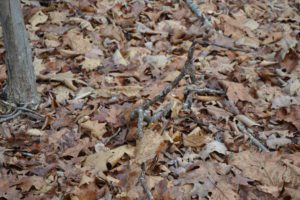Oakland School Education Outing!
We drove into the Oakland School on a crisp Wednesday morning. The campus was beautiful— rolling hills littered with white paneled, barn-house style buildings. I was there with Bette and Lilly, two other Wild Virginia volunteers, to teach a youth group about the importance of different habitat types for animals.

Then we broke into two groups and played games. I helped lead a hide-and-seek scavenger hunt and then built bird fe
We started the scavenger hunt by asking them if they knew what camouflage was. Another instant answer: “It’s how animals hide! They change their colors to blend in with the background.” It’s always refreshing to see that genuine enthusiasm for learning that kids have. We led them into the realization that animal habitats help shape animal camouflage and then we took them out to search for prey in the woods: little trinkets of various colors we had hidden here and there. Some they found easily—the bright green sock-puppet on a log; others, not so much—the wooden spoon tucked into a pile of sticks.
The kids adopted different seeking strategies. Some dashed off down the trail and shouted out all the brightly colored items while passing over some of the more subtle hiders. Others walked deliberately, preferring the glory of finding the secret cork nestled in with the leaves.


The students were certainly glad to be out of the classroom and engaged with nature. They were proudly brandishing their bird feeders and chatting enthusiastically. We finished by telling them about Wild Virginia, and how we were working to help protect animal habitats in the national forests. We then waved them goodbye as they skipped down the path back to class.
By Tom Jackson, Wild Virginia Volunteer